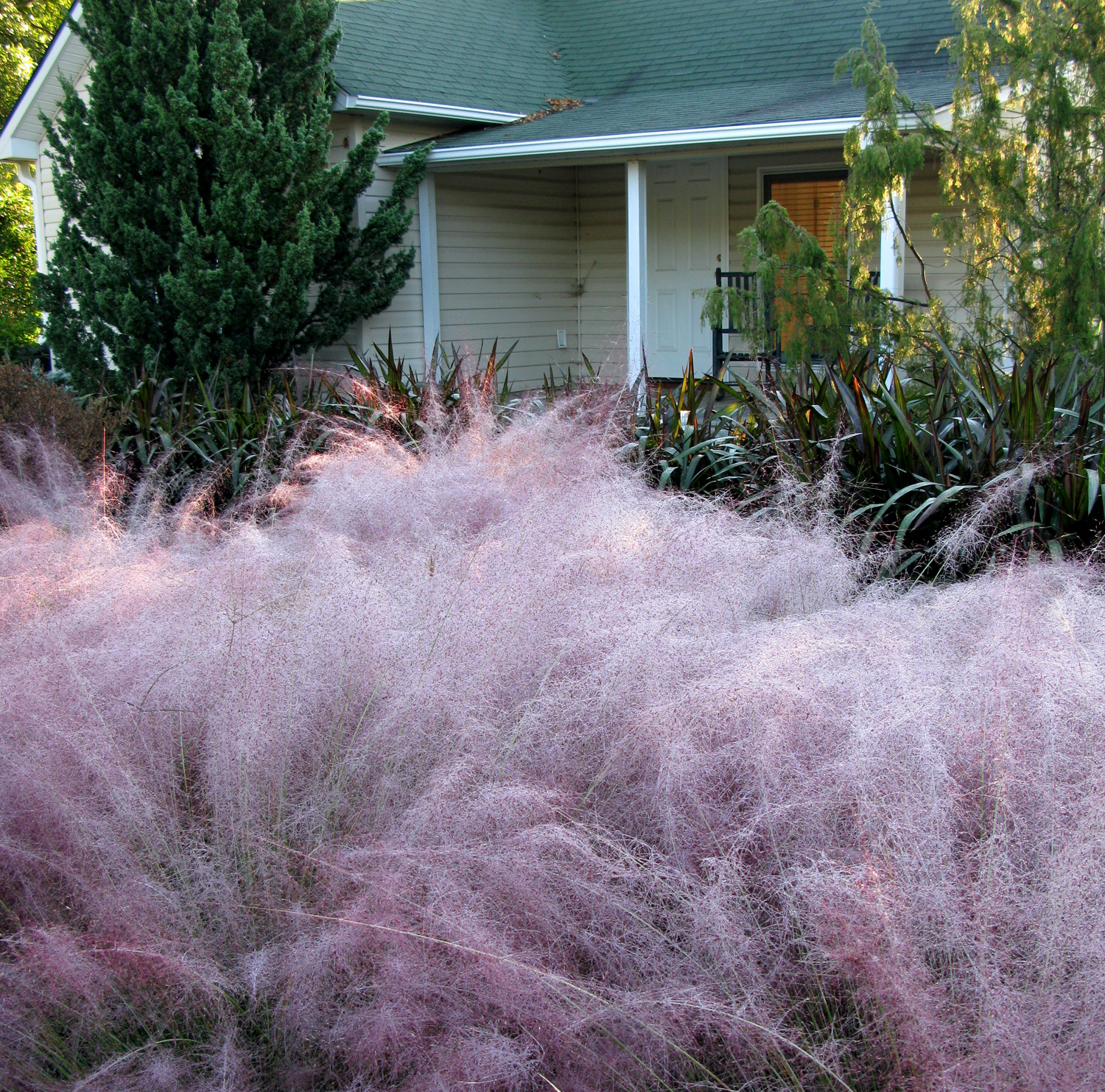Covering Ground with Grasses and Sedges
We think about covering ground literally—planting over bare soil—and in the broader sense of making our landscapes more ecologically sound. A few bare patches in the garden help support wildlife, but too much invites weeds and erosion. Mulching requires regular applications and is resource intense. Our landscapes can be better when we choose a living mulch and cover the ground with plants.
Why? A living mulch will help:
- Capture rainwater before it reaches the ground, slowing runoff and reducing pollutants and sediment that flow into waterways
- Increase water infiltration, recharging groundwater and making it available for plants
- Retain soil and reduce erosion
- Support wildlife, including pollinators
- Reduce weed competition
Grasses and sedges are made for the job. Branching, fibrous root systems hold soil in place while also increasing water infiltration. Dense crowns and abundant foliage slow and filter runoff. Planting densely reduces weed competition, which lowers labor costs and reduces herbicide use. Native grasses and sedges also help support wildlife with food, cover, and nesting material. Landscapes can function better and be more beautiful when we cover the ground. It's a low-resource practice that will supercharge your landscape.
Different Ways to Look at Covering Ground
We find it helpful to think of covering the ground using two general techniques: with large sweeps of one or two kinds of plants or as part of a matrix in a layered, designed plant community.
Large sweeps include what most of us think of as ground covers. They’re plantings of one, maybe two, species that are allowed to grow naturally. They might be cut back once a year in late winter to freshen them and allow for new growth. Lawn alternatives are also large sweeps, but they’re typically mowed periodically (2-3 times a year) to keep them uniform.
A matrix is the base layer of a more complex planting. Grasses and sedges may be mixed in with other herbaceous species to form a matrix at ground level. Larger, taller perennials and woody plants are interplanted in the matrix to give the design coherence and structure. It’s a technique that uses multiple layers to build a designed plant community. There’s a helpful discussion of “the matrix” in this blog post at The New Perennialist.
Choosing the Plants
We’ve curated a list of our plants that fit these techniques and included them in a helpful chart. Our Covering Ground chart includes grasses and grasslike plants traditionally thought of as “ground covers,” along with some not-so-obvious selections. We won’t be picky about definitions. One person’s ground cover is another’s lawn alternative or matrix plant.
As you narrow choices using the chart, we suggest consulting the individual plant profiles in our plant database to finalize your selections. Lastly, note that we cover “lawn alternatives” specifically in our Plants for Green Infrastructure Chart. Check there if you’re interested in selections that can be mowed periodically.





